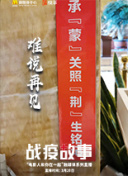


The FIFA World Cup Trophy is the most coveted prize in international football. From its inception in 1930, the trophy has undergone significant changes in terms of design, materials, and craftsmanship. In this article, we explore the different materials used to create this prestigious trophy.
Gold is the primary material used in the FIFA World Cup Trophy. The current trophy, introduced in 1974, stands at 36.8 centimeters tall and weighs around 6.1 kilograms. It consists of 18-carat gold and is coated with a layer of malachite, a green mineral from the Azurite-Malachite family. The use of gold represents the ultimate achievement and symbolizes the glory associated with winning the tournament.
The production of the FIFA World Cup Trophy involves Italian artisans who are renowned silversmiths. Their craftsmanship showcases the rich history and tradition of Italian design. These skilled artisans meticulously shape and mold the gold to create the iconic figure of the trophy. The expertise and dedication of the Italian silversmiths contribute greatly to the beauty and elegance of the trophy.
The trophy stands on a circular base made of solid marble. The base adds stability and grandeur to the overall design of the trophy. The white marble used in the base complements the golden hue of the trophy, creating a harmonious visual appeal. The use of marble, known for its durability and timeless beauty, further enhances the trophy's prestige.
Prior to the introduction of the current trophy, the Jules Rimet Trophy was awarded to the winners of the FIFA World Cup from 1930 to 1970. This trophy was made of gold and featured a unique winged figure holding a globe. The Jules Rimet Trophy was an iconic symbol of the World Cup and represented the spirit of international football. However, due to security concerns, it was permanently awarded to Brazil after they won the tournament for the third time in 1970, leading to the creation of a new trophy.
The FIFA World Cup Trophy is the most valuable prize in international sports. To ensure its safety, a replica is awarded to the winning team, while the original trophy is kept by FIFA. Each winner receives a gold-plated replica of the trophy, which remains their permanent possession. The replicas are created using similar materials and craftsmanship as the original, allowing the teams to celebrate their victory with a prized symbol of their achievement.
The materials used in the FIFA World Cup Trophy reflect the prestige and excellence associated with this renowned sporting event. The combination of gold, Italian craftsmanship, marble base, and intricate design ensures that the trophy remains a symbol of the triumph and glory of the world's greatest football teams. Its rich history and the carefully selected materials make the trophy a truly iconic symbol of the FIFA World Cup.
